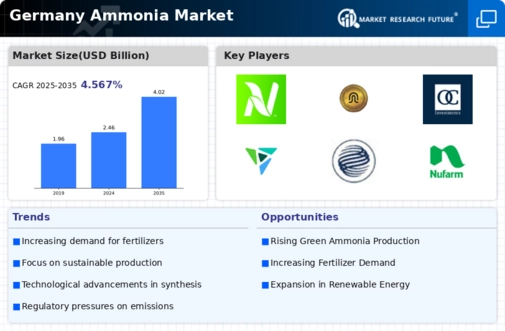The Germany Ammonia Market is a dynamic and competitive landscape that plays a crucial role in the broader chemicals sector, primarily driven by the demand for fertilizers and various industrial applications. The market is characterized by a mix of established players and emerging companies, all vying for market share through innovation, production capabilities, and strategic partnerships. The competitive dynamics are influenced by factors such as regulatory standards, environmental concerns, and advancements in production technologies.
Companies in this space are focusing on enhancing their operational efficiencies and sustainability practices to meet both market demands and governmental regulations, thereby shaping the competitive structure of the ammonia market in Germany.HANWA has established itself as a significant player within the Germany Ammonia Market, leveraging its robust supply chain and extensive distribution network to meet the needs of various industries. The company's strengths lie in its strong relationships with suppliers and clients, facilitating timely and efficient deliveries. Additionally, HANWA's commitment to sustainability and compliance with environmental regulations has enhanced its reputation in the market.
The company focuses on producing high-quality ammonia, catering to both agricultural and industrial sectors, which positions it favorably against competitors. With a strategic focus on innovation and resource efficiency, HANWA is well-placed to adapt to the changing dynamics of the German ammonia landscape.Nutrien is another key competitor in the Germany Ammonia Market, known for its comprehensive range of agricultural solutions, including fertilizers and crop protection products. The company's strength lies in its vertically integrated operations, which allow it to produce and supply ammonia with enhanced quality control.
Nutrien has made strategic investments in infrastructure and technology to bolster its market presence in Germany, ensuring a steady supply of its products to both local and international customers. Furthermore, the company's proactive approach to sustainability, alongside ongoing mergers and acquisitions aimed at expanding its market footprint, reinforces its position as a formidable player in the region. Nutrien's emphasis on innovative agricultural solutions and commitment to customer satisfaction underscores its competitive edge in the evolving ammonia market landscape in Germany.























Leave a Comment